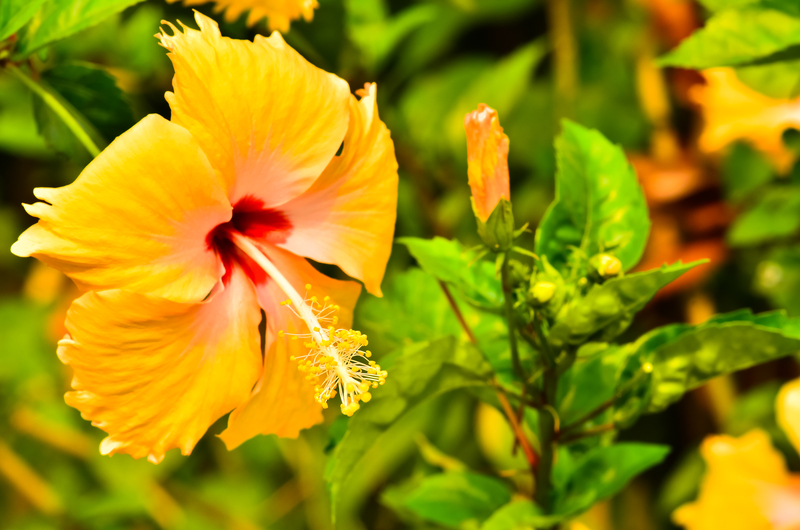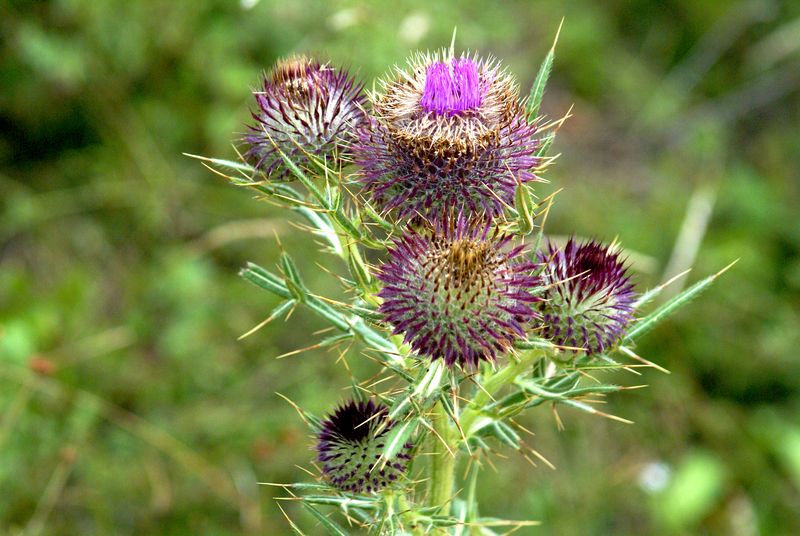Art and Precision in Modern Hedge Trimming Techniques
Posted on 18/06/2025
Art and Precision in Modern Hedge Trimming Techniques: An In-Depth Guide
Discover how the blend of artistry and precision shapes contemporary hedge trimming techniques, creating both functional and breathtaking outdoor spaces.
Introduction to the Art of Hedge Trimming
The art and precision in modern hedge trimming techniques go far beyond simply cutting back overgrown shrubs. Today's approach is a fascinating combination of horticultural science, skilled craftsmanship, and cutting-edge technology. Whether you own a stately garden, manage a landscape maintenance company, or enjoy cultivating natural beauty in your backyard, understanding these advanced techniques can elevate your outdoor environment. In this comprehensive article, we'll explore the evolution, processes, and artistry behind modern hedge trimming, touching on the tools, styles, and technologies that transform routine work into living masterpieces.
Why Is Precision Important in Hedge Trimming?
Precision in hedge trimming encompasses much more than aesthetics; it directly impacts the health, longevity, and functionality of your greenery. Let's delve into the reasons why precise hedge cutting techniques are vital:
- Promotes Healthy Growth: Accurate cuts prevent disease, support air flow, and encourage dense foliage.
- Shapes Aesthetic Appeal: Crisp lines and smooth curves offer visual harmony and structure to landscaping.
- Increases Property Value: Well-maintained hedges enhance curb appeal and create elegant outdoor spaces.
- Optimizes Natural Barriers: Properly trimmed hedges serve as effective windbreaks and privacy screens.
- Encourages Uniformity: Precise methods result in evenly shaped hedges, avoiding unsightly gaps or bulges.
Blending Artistry with Technique: The Heart of Modern Hedge Design
Traditional hedge trimming focused primarily on functionality and containment. In contrast, modern hedge shaping draws inspiration from topiary art, geometric design, and even architectural principles. The result is not just tidy foliage, but sculpted works of living art. Here are some key elements that bring both art and accuracy to hedge trimming:
- Topiary Creations: Sculpting hedges into animals, spirals, or abstract forms demonstrates the artistic side of trimming.
- Formal Styles: Classic shapes such as rectangles, spheres, or layered hedges complement traditional landscapes.
- Naturalistic Designs: Using asymmetry and flowing lines to echo the contours of wild nature.
- Sculpted Green Walls: Vertical hedges that act as living canvases in contemporary gardens.
Essential Tools for Precision Hedge Trimming
Achieving meticulous results requires the right combination of hand tools and modern equipment. With the advancement of technology, today's landscape professionals and homeowners can choose from an array of options designed for both comfort and perfection:
- Manual Hedge Shears: Best for detailed work and small hedges, ensuring close control over each cut.
- Electric and Battery-Powered Trimmers: Popular for their efficiency, these tools deliver powerful yet uniform cutting action.
- Telescopic Trimmers: Ideal for reaching tall or deep hedges without needing a ladder.
- Laser-Guided Trimmers: The latest innovation, projecting a straight line to guide precise cuts.
- Clean, Sharp Blades: Essential for preventing plant damage and achieving smooth, even edges.
Modern Hedge Trimming Techniques: Merging Science with Skill
Today's precise hedge trimming methods combine horticultural expertise with calculated strategy. Here's a look at some of the advanced techniques employed by professionals aiming for both beauty and plant vitality:
-
Layered Trimming:
Multi-layered cuts give depth and dimensionality, especially in tall or tiered hedges. Each layer is carefully planned to ensure sunlight reaches all leaves and prevents inner dieback.
-
Straight Line and Level Techniques:
Utilizing string, stakes, or laser guides, trimmers achieve razor-straight or perfectly curved hedge profiles--invaluable for formal gardens or intricate patterns.
-
Tapering:
Hedges are often trimmed wider at the base than the top, allowing lower branches to receive sufficient sunlight. This prevents thinning and maintains a dense, elegant appearance.
-
Seasonal Timing:
Modern best practices recommend trimming at optimal times--typically late spring or summer for most species--avoiding periods of high stress or active growth to minimize shock and disease.
-
Selective Pruning:
Instead of blanket shearing, expert trimmers selectively remove certain branches to manage growth while maintaining a hedge's aesthetic form and health.
Topiary Art: Elevating Hedge Trimming to Creative Heights
Among all modern hedge shaping techniques, topiary art stands out as the quintessential marriage of creativity and exactitude. Topiary involves training and sculpting plants into ornate, often whimsical shapes. This living art form dates back to ancient Rome but continues to thrive in contemporary gardens worldwide.
Key principles of topiary:
- Planning: Success starts with envisioning the final form and choosing suitable plant species (like boxwood or yew).
- Frameworks: Some artists employ wire frames as guides for complex designs.
- Incremental Shaping: Large changes are made gradually, allowing the plant to respond and grow into its shape.
- Consistent Maintenance: Topiary requires regular, delicate trimming to retain crisp, defined lines.
Eco-Friendly Trends in Hedge Trimming
Modern horticulture places increasing emphasis on sustainability and environmental consciousness in all practices, including precise hedge maintenance. Here's how artistic and accurate trimming aligns with green values:
- Electric and Battery-Powered Tools: Reduces carbon emissions and noise pollution.
- Organic Mulching: Trimming debris is composted, nourishing soil and reducing landfill waste.
- Water-Efficient Plant Choices: Native species require less irrigation once shaped and established.
- Wildlife-Friendly Hedges: Artists and trimmers leave portions uncut for nesting or habitat corridors, supporting biodiversity.
Common Mistakes and How to Avoid Them
The pursuit of both artistry and precision in hedge trimming has its pitfalls. Awareness of common mistakes can help ensure lush, long-lived results:
- Over-Trimming: Removing too much foliage at once can stress plants and leave brown patches.
- Using Dull Blades: Causes ragged cuts that heal poorly and invite disease.
- Poor Timing: Trimming at the wrong season hinders regrowth and can kill sensitive species.
- Ignoring Maintenance: Even the finest designs need regular attention to stay sharp and healthy.
The Future of Modern Hedge Trimming Techniques
In the age of smart homes and connected gardens, modern hedge trimming evolves with new technology. Robotic trimmers, AI-powered planning tools, and augmented reality apps give gardeners and landscapers unprecedented control over shaping their green spaces. Here's what lies ahead:
- Robotic Trimmers: These machines can autonomously maintain specified shapes, reducing labor and maximizing accuracy.
- Data-Driven Trimming: Sensors analyze plant health to optimize trimming schedules and techniques.
- AR Visualization: Augmented reality overlays ideal hedge shapes onto the real hedge, guiding DIYers and professionals alike in making artistic cuts.
- Sustainable Practices: The integration of environmental sensors ensures the lowest possible impact on local ecology.
Choosing the Right Technique for Your Hedges
When it comes to achieving artful precision in hedge trimming, assessing your needs and constraints is key. Consider the following:
- Hedge Species: Some plants respond better to frequent shaping, while others require infrequent, lighter trims.
- Desired Style: Decide between formal, geometric, naturalistic, or topiary designs.
- Scale and Complexity: The size of your landscape and complexity of shapes will dictate your tools and approach.
- Skill Level and Resources: Professional help may be best for complex topiary, while basic shapes are manageable for most homeowners.
Expert Tips for Achieving Perfect Hedge Lines
- Mark Your Lines: Use string, chalk, or laser to mark the desired profile before trimming.
- Step Back Frequently: Inspect progress from a distance to maintain balance and proportion.
- Maintain Your Tools: Keeping blades sharp ensures clean cuts and healthier plant recovery.
- Work in Dry Weather: Wet leaves clump together and are harder to cut cleanly.
- Trim in Small Increments: This prevents accidental over-cutting and preserves hedge health.
Conclusion: Cultivating Art and Precision in Your Garden
The fusion of artistry and accuracy in modern hedge trimming sets today's landscapes apart, turning mundane maintenance into a creative endeavor. By embracing the latest hedge cutting technology, experimenting with design, and employing thoughtful horticultural practices, anyone can sculpt their green spaces into objects of beauty and pride.
Ultimately, the joy of hedge trimming lies at the intersection of vision, precision, and patient care. Whether you're perfecting a stately formal avenue or crafting whimsical topiaries, you are continuing a tradition that spans centuries--yet remains ever fresh and evolving through new ideas and innovations.
Ready to master the art and precision of hedge trimming? Gather your tools, let your creativity guide you, and see your outdoor canvas transform with every careful cut!



